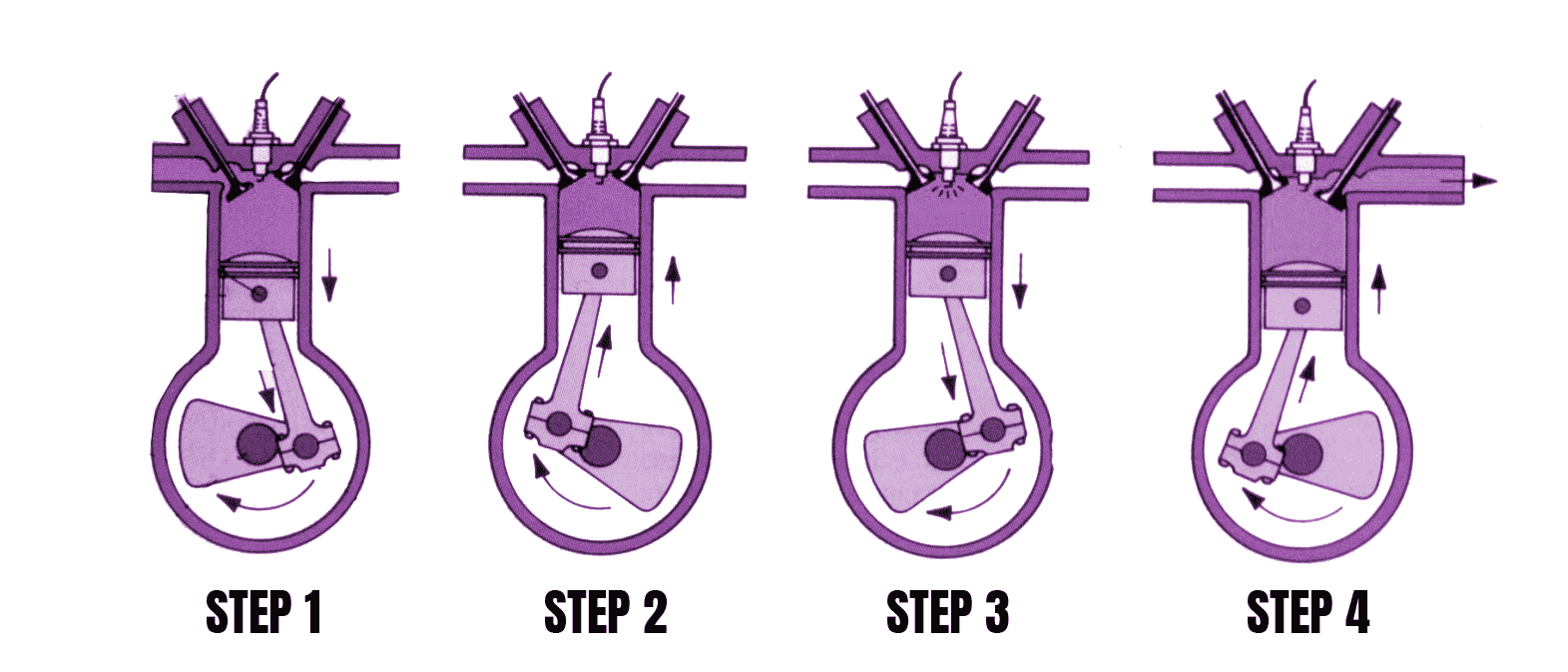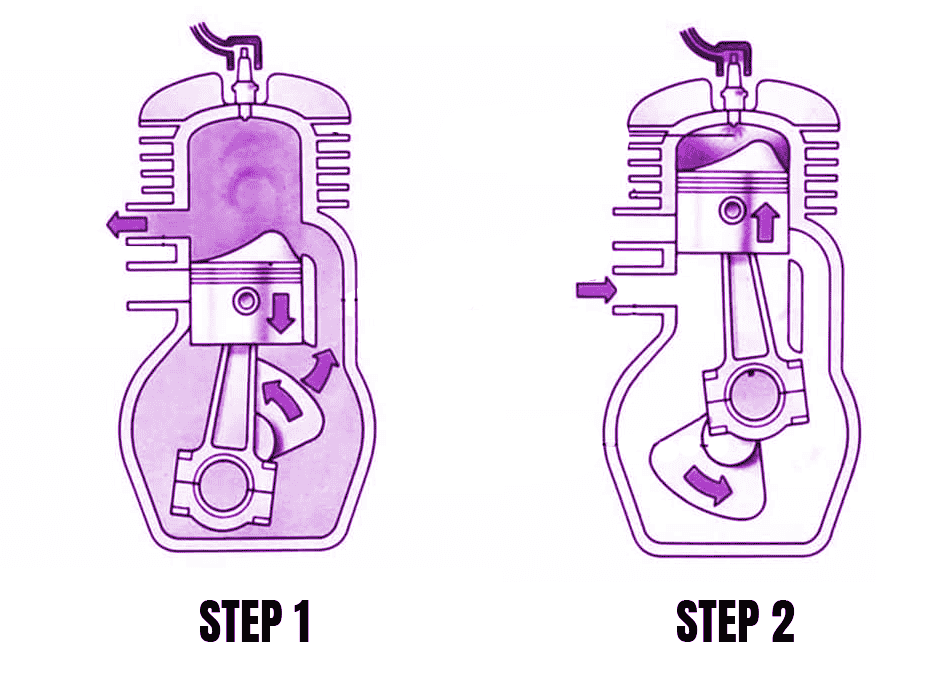As you may already know, there are different types of engines that can be equipped in a scooter. If we classify the engines by their times and way of combustion, we can categorize them into 4-stroke engines and 2-stroke engines. If you are interested in knowing the particularities of each one, stay and we will tell you about it!
What is a 4-stroke engine?
The 4-stroke engine is so named due to the number of phases that make up a complete cycle of engine operation. The mechanics of a 4-stroke engine can be found both in engines that run on gasoline and in engines that run on diesel or gas oil, but this does not mean that we can mix fuels, since they work completely different.
In this article we will focus on 4-stroke gasoline engines, as this is the one used in today's motorcycles and scooters.
Features of a 4-stroke engine
A 4-stroke engine is characterized by the fact that its operation can be divided into 4 stages:
Intake: The piston lowers and the fuel-air mixture enters the combustion chamber through the intake duct.
Compression: The piston moves up the cylinder stroke and compresses the mixture. In this phase all valves remain closed.
Explosion: This is when the spark plug comes into play, which causes the air-gasoline mixture to explode in a controlled manner inside the combustion chamber by means of a spark.
Exhaust: Derived from the effect of the explosion, the piston moves downward, the exhaust valve opens so that the explosion gases leave the engine.

Every 2 turns of the crankshaft, or every 2 revolutions, the 4 stages of the 4-stroke engine operation are completed.
Advantages of a 4-stroke engine
The main advantages and reasons why 4-stroke engines have become the most widely used in the scooter and motorcycle sector are as follows:
Efficient and contained consumption.
Ease of refueling because it does not require mixing gasoline and oil.
Less maintenance of its components.
Lower CO2 emissions.
Less vibration.
Disadvantages of a 4-stroke engine
Although these are not disadvantages, but characteristics of this type of engines, if we compare them with 2-stroke engines, we can identify the following disadvantages:
The weight is higher than that of a 2-stroke engine.
Repairs are usually more expensive.
Less power.
How to improve the performance of a 4-stroke engine?
As we have already mentioned in the article of how to increase the power of a 125cc motorcycle, there are different modifications to which a 4-stroke engine can be subjected.
The least intrusive ones involve eliminating restrictions derived from the combustion process, such as replacing the standard exhaust pipe with another one with fewer restrictions so that the engine does not have to make so much effort in the exhaust stage. In this way we will obtain greater energy efficiency and improve its performance.
All the modifications we make to an engine will involve increasing the displacement (by changing the cylinder head for a higher one or placing a larger cylinder for example), reducing weights, or adjusting the fuel mixture, quantity and detonation of the fuel.
What is a 2-stroke engine?
The 2-stroke engine, as is the case with the 4-stroke engine, is so named because of the number of phases that make up a complete cycle of the engine's operation. The mechanics of a 2-stroke engine can only be found in gasoline engines, specifically in those vehicles that require high acceleration, such as a motocross motorcycle.
Features of a 2-stroke engine
Unlike a 4-stroke engine, 2-stroke engines require the fuel to be enriched with oil to ensure correct operation.
A 2-stroke engine is characterized by the fact that its operation can be divided into 2 stages:
Intake-Compression: The piston moves downward, allowing the mixture of gasoline, oil and air to enter the combustion chamber for compression.
Explosion-Exhaust: Gasoline and oil mixture enters and is stored in the pre-compression chamber, while the fuel explosion takes place in the lower part of the cylinder.

Each turn of the crankshaft, or each revolution of the engine, completes the 2 stages of 2-stroke engine operation.
Advantages of a 2-stroke engine
The 2-stroke engines are still used by manufacturers because:
Since they have no valves, it is simpler and more economical than a 4-stroke engine.
They develop more power than a 4-stroke engine of the same displacement.
The cost of repairs is more economical.
It weighs less than a 4-stroke engine.
They can operate in any position as there are no lubricants in the crankcase.
Disadvantages of a 2-stroke engine
As with 4-stroke engines, with this type of engine there are also a number of disadvantages that are characteristic of 2-stroke engines:
It consumes more fuel and not all the fuel consumed is used.
It generates more CO2 emissions.
When operating at higher engine speeds, the engine and its components are subject to more wear and tear.
Conclusion
As a general conclusion we can extract that one motor does not substitute the other, rather they have different uses. Depending on the needs and uses, one or the other will be better.
It is also true that, due to emissions regulations, in recent years brands have decided to use 4-stroke engines for their scooters, as it is understood that they are for urban use. On the other hand, the stroke engines have remained in a more recreational use, such as mountain bikes or racing scooters.
If you want to get the most out of your 4-stroke or 2-stroke scooter engine, don't hesitate to consult our range of components for your bike. Discover the variator that changed the scooter world!

